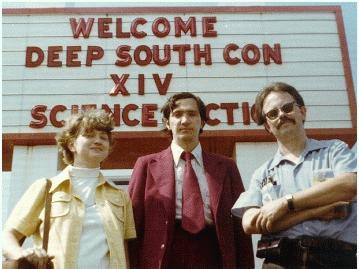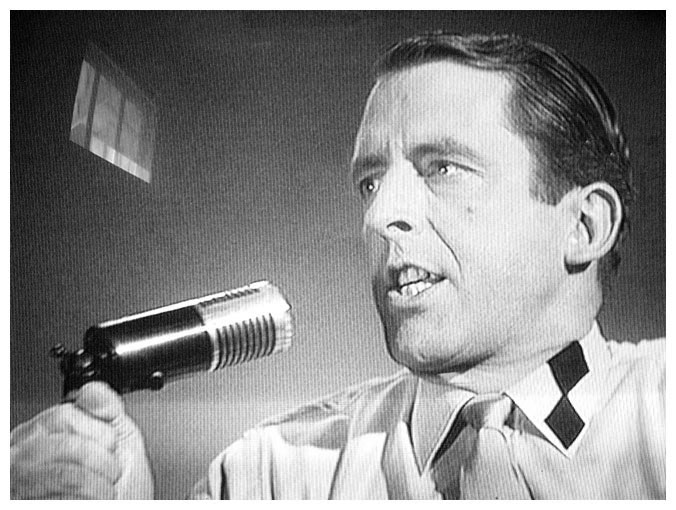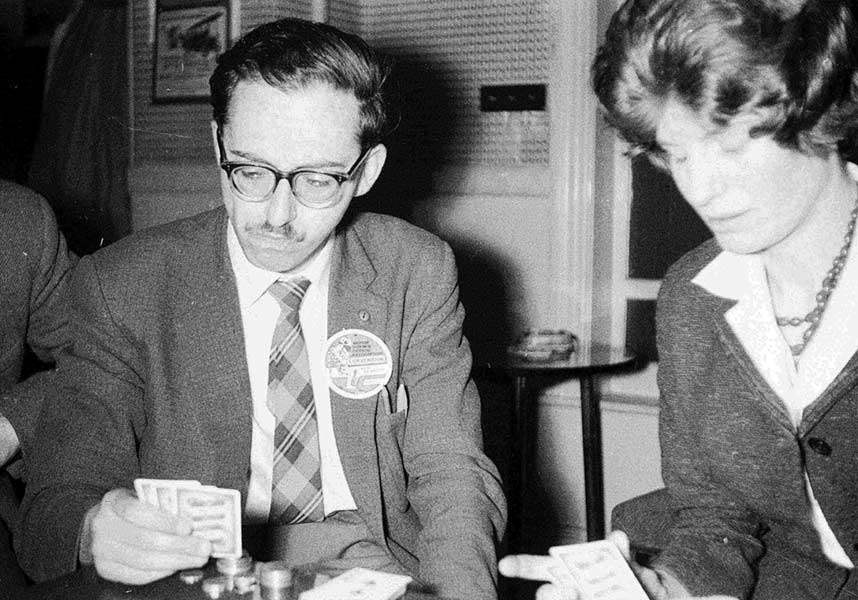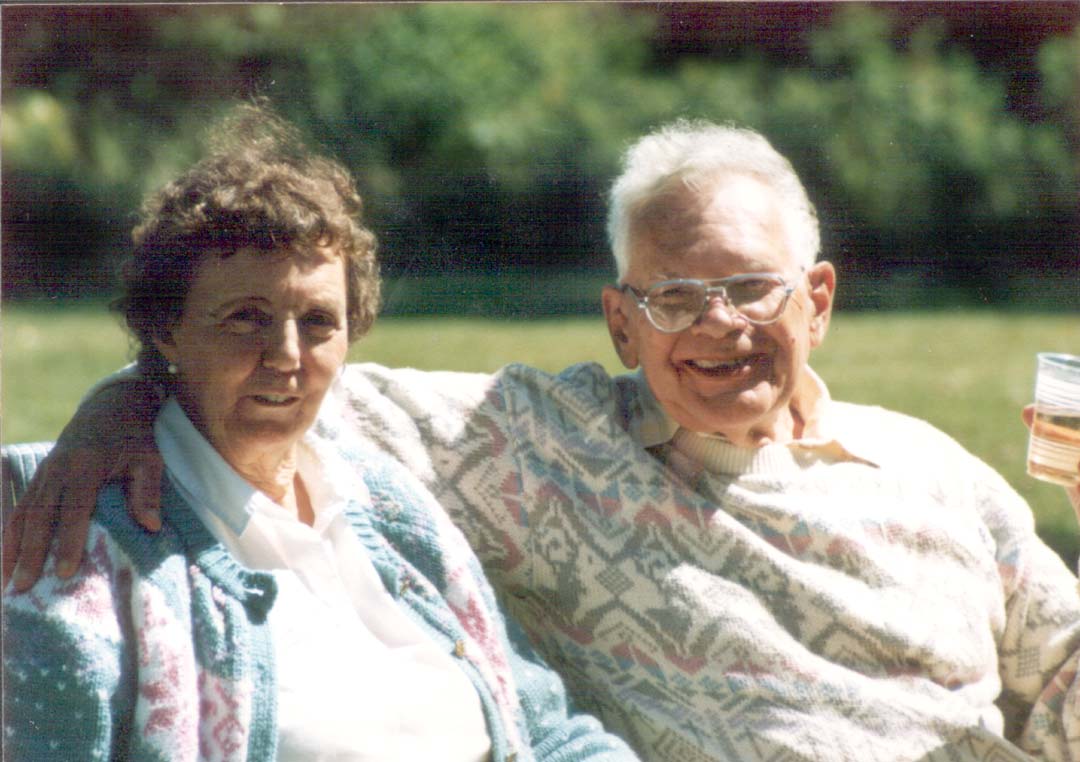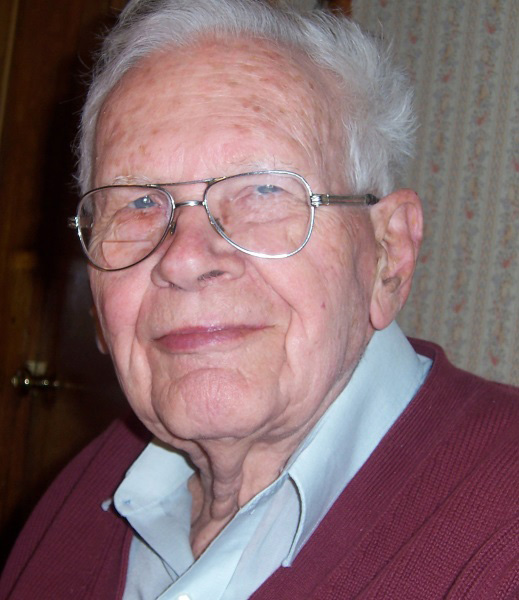
Dave Kyle and 2011 Big Heart Award winner Gay Haldeman.

Sidney Coleman, Dave Kyle and James White at the 1987 Worldcon. Photo by and copyright © Andrew Porter

Rich Lynch and Dave Kyle at ConFrancisco in 1993. Photo and copyright © Andrew Porter
By John Hertz: Many of us have lots of them. Here are three of mine.
In April 2017 will be Lunacon LIX, the New York convention hosted by local club the Lunarians. For years I was such a regular attender that some folks thought I lived in New York. I’ve moderated Lunacon panels, I’ve taught Regency dancing, I’ve judged the Masquerade, I’ve been Fan Guest of Honor, I’ve listened to people sing “Demons in your bed will eat you up. Do not call your mother; who do you think let the demons in?”
One year as I went looking for a seat in the Masquerade audience I found Dave Kyle ushering. I was impressed by this modern Cincinnatus. The original, in the days of the Roman Republic two and a half millennia ago, was plowing his farm when a group of Senators rushed to see him. The army was trapped and in great danger. Cincinnatus had been named Dictator, a rare position bringing supreme power. He called up more men, defeated the enemy, and went back to his plow. Cincinnati, Ohio, was named for him. Dave had chaired the World Science Fiction Convention and here he was plowing away like anybody else.
His Worldcon was the 14th, New York, the Biltmore Hotel. In those days we had a Banquet and gave the Hugo Awards there. Dave was at the head table. He later recounted, in Mimosa — for which he wrote two dozen articles —
As was customary, those who didn’t pay to eat could come into the room to hear the speeches at the proper time…. One of the gofers [please don’t write “gophers”, throwing away the joke of having to gofer this and gofer that – JH] told me the Fire Marshal was complaining that the stairs to the balcony were blocked by those non-eaters sitting there, waiting to take positions for the after-dinner ceremonies. “What do we do?” “Tell them,” I said, “that they can’t sit there.”
This became the catch-phrase “Dave Kyle says you can’t sit here”, a kind of Banquet’s Ghost he was never allowed to live down. But he laughed too.
That night at Lunacon, Dave told me “Actually you can sit wherever you like.”
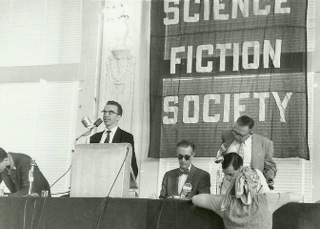
Here is Dave at NyCon II, sitting with bow tie and dark glasses; Larry Shaw at podium, John Campbell and Robert Silverberg to Kyle’s left. Porter says, “Not my photo; I was 10 years old.”
– o O o –
A while before Torcon III, the 61st Worldcon, Dave phoned asking if I was going to attend. Yes, I said; I had written up Mike Glyer, the Fan Guest of Honour (note spelling), for the Program Book, and was to build an exhibit about him in the Exhibit Hall. Dave asked, are you going to wear that propeller beanie? Yes, I said, I always do at cons. Dave asked if I’d help him with a presentation on Hugo Night.
He was going to bring the propeller beanie that had been placed on the head of Bob Bloch at Torcon II. Bloch had been Pro Guest of Honour there and at Torcon I. Meanwhile he had inconsiderately died so Torcon III could only make him Ghost of Honour.
Dave was going to be the Propeller Beanie of the Past and wanted me to be the Propeller Beanie of the Future. I tried to say I felt unworthy but he was having none of that. Then I thought of something else. I always wear white tie on Hugo Night, I said. The propeller beanie doesn’t really go with that costume. It would be like running with the ball while playing soccer. Well, he said, see if you can find a way. Okay, Dave; for you, anything.
I thought maybe the propeller beanie would fit under my top hat, so I could by raising the hat do what some costumers call a “reveal”. That didn’t work. Finally I found I could get the beanie into my inside breast pocket.
At the con we managed to rehearse. I was to stand back while Dave gave introductory remarks. Then I should step forward, don the beanie, and retire again while Dave had a few more things to say. Simple enough.
Came the event. Dave took the lectern. He spoke. I joined him. I took off the top hat, drew out the beanie, and put it on. The crowd went wild. A photo of this was put in Locus. I guess a man in formal clothes and a propeller beanie was a One of Us moment. Anyhow I smiled, bowed, and stepped back so Dave could go on.
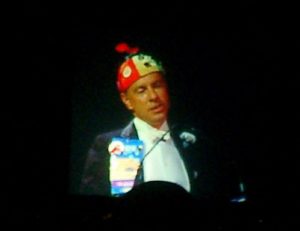
John Hertz receives Big Heart Award at Torcon 3.
He began speaking about the Big Heart, highest service award in the SF community. He went on to describe the year’s recipient. Slowly the light dawned. He was talking about me.
The whole story, telephone, Past, Future, rehearsal, and all, had been a ruse to make sure I should be there.
Dave gave me a plaque and a rosette.
I had been snookered.
– o O o –
The North America Science Fiction Convention is held when the Worldcon is overseas. In 2005 the Worldcon was at Glasgow and the NASFiC was at Seattle. Monday morning in the hotel lobby after the NASFiC Dave said “Let’s go to the Science Fiction Museum.”
The Museum had just opened in 2004. It had been designed by Tim Kirk, whom its founder Paul Allen had hired because he liked Kirk Designs’ proposal, not knowing he got a man who had won five Hugos as Best Fanartist before turning pro. Kirk’s task was no small challenge, not least because so much of SF was, as Hamlet said “words, words, words”; if the Museum were dominated by visual-media SF that would be a serious under-representation. Kirk had done wonderfully.
Who could be a better partner in wonder for an expedition there than Dave Kyle?
We went up to the Kyles’ hotel room. Ruth fed us breakfast. She was as always solicitous and helpful, but would the two boys ever be seen again? Also I had a plane to catch. We decided the safest plan was to get a taxi and pay the driver to come back at a set time. In the Museum we then took turns pulling each other away from things.
The ground floor had the SF Hall of Fame, relocated from the University of Kansas. Just added, along with Philip K. Dick, were Chesley Bonestell, Ray Harryhausen, and Steven Spielberg, the first SF artists other than writers to be inducted.
Also on the ground floor was a timeline, with Hugo Gernsback, Carol Hughes and Buster Crabbe as Dale Arden and Flash Gordon conquering the Universe, The Pocket Book of SF our first paperback collection of short stories, John Campbell, Orson Welles broadcasting The War of the Worlds, Heinlein with Rocket Ship Galileo Paul Allen’s first SF book, and Nineteen Eighty-four, just to mention a few points from 1925-1955.
Downstairs, three galleries with themes Brave New Worlds, Fantastic Voyages, and Them! In Voyages was a Space Dock, with orbiting ships visitors could select for miniature documentaries. Them! held an Interplanetary Lounge, variously imagined aliens, robots metal or mortal, and a Cargo Bay art gallery including Kelly Freas and Richard Powers.
I mustn’t leave out Harlan Ellison’s typewriter or the books Dave had published.
One “ship” floating past was a city, New York, New York (“What city has two names twice?”), from James Blish’s Cities in Flight; the crew that Kirk assembled, many of whom were veterans of Industrial Light & Magic, used Blish’s text, the best book covers they could find, and extrapolated views of Manhattan. The first of these four novels came to be known as They Shall Have Stars; it was originally Year 2018! in which we now almost are, and Dave did not quite live to see.




